Module 21 − Test Methods and Practices
Pages i ,
1−1,
1−11,
1−21,
2−1,
2−11,
2−21,
2−31,
2−41,
3−1,
3−11,
3−21,
3−31,
4−1,
4−11,
5−1,
5−11,
5−21,
5−31, AI−1 to AI−3, Index
Testing
Components by Comparison Testing components by comparison is the most preferred method for
troubleshooting. The ALT (alternate) mode setup is the most commonly used mode for this method. This mode allows
the technician to compare a known good component to a suspect component. This is accomplished by connecting
channel a to a known good device, channel B to the device under test, and a common test lead to COM as illustrated
in figure 2-34. Select the ALT button, and the 2000 will alternately display the signature of the known good
device and the device under test. By examining the signature differences, you can detect a defective component.
Figure 2-35 is a typical example of the CRT display on the 2000 while testing the base to emitter on a good
transistor. Figure 2-36 illustrates a defective transistor under the same test setup. Note that in the low range,
the transistor appears to be good. Sometimes component defects are more obvious in one range than another, so is a
suspect device appears normal for one range, try the other ranges.
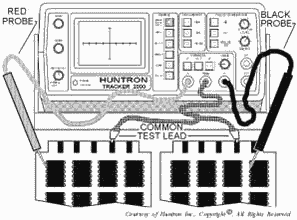
Figure
2-34. - Alternate mode setup.
2-41
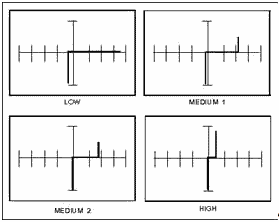
Figure 2-35. - Signatures between base-emitter of a good transistor.
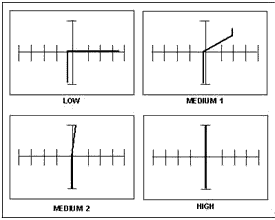
Figure 2-36. - Signatures between base-emitter of a defective transistor. Q-31. What is the most preferred method of troubleshooting? Q-32. Why is it recommended to use more than one range while troubleshooting a device? Troubleshooting Tips When
you are testing individual components in a circuit, a parallel resistor or diode of similar value may cause a
defective component to appear good. Therefore, you should, in most cases, electrically isolate the suspected
component from the circuit while testing individual components. The best way to do this is to desolder all but one
lead on the suspected component.
2-42
Q-33. When you are testing individual components in a circuit, what may cause a defective component
to appear good? You should be aware that devices made by different manufacturers may appear to have
slightly different signatures. This is normal, especially with digital integrated circuits, and does not
necessarily indicate a failed device. When this occurs, the best way to verify this is to compare the outputs of
the device under test with the equipment specifications to ensure the signals are adequate for proper equipment
operation.
Summary The information that follows summarizes the important points of this chapter.
ELECTRON TUBES are usually tested for ShortS, TRANSCONDUCTANCE, and the
presence of GAS. Several different types of tubes (i.e., TWTs, magnetrons, and klystrons) are normally tested
in-circuit.
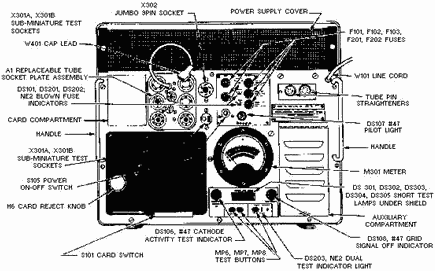 Most TransistorS can be tested by measuring the forward-to-back resistance of their
junctions using a standard ohmmeter. The resistance scale of the ohmmeter must be carefully selected to ensure
that the current rating of the transistor is not exceeded. ESD-SENSITIVE DEVICES are
components that require special handling. Some of the more sensitive devices can be damaged by static charges as
small as 35 volts.
2-43
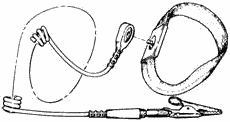 Most DIODES and MOSFETs can be tested by measuring the forward-to-back
resistance of their junctions using a standard ohmmeter. MOSFETS, however, are classed as ESD-sensitive devices;
and care should be exercised when handling or testing them. INTEGRATED Circuits (ICs)
have revolutionized the electronics industry. They are rugged, compact, and inexpensive. There is a wide
assortment of equipment on the market designed for testing ICs.
 BATTERIES are common to a large number of both electronic test equipment and
operational equipment. You should be familiar with the different types of batteries, their test requirements, and
the safety precautions to be followed. RF ATTENUATORS and RESIsTIVE Loads
are common devices that are widely used for attenuating RF signals and impedance matching. Resistive loads can be
tested with a standard ohmmeter, and RF attenuators are normally tested through the RF substitution method.
2-44
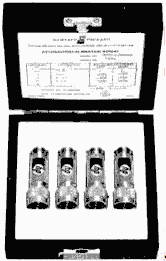 Fiber-OPTIC CABLES are used primarily for the transmission of high-speed data over
short distances. Their construction and theory of operation require that they be tested with a light source,
usually a laser beam. There is a wide assortment of test equipment designed specifically for testing fiber- optic
cables.
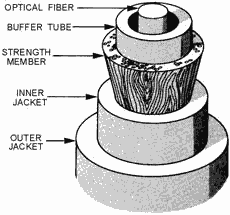
AUTOMATIC Test Equipment (ATE) is test equipment designed to evaluate the operational
performance of a piece of equipment or printed circuit board (PCB).
2-45
The HUNTRON TRACKER 2000 is a versatile troubleshooting tool commonly used for
statically testing resistors, capacitors, inductors, diodes, transistors, multiple-component circuits, and
integrated circuits.
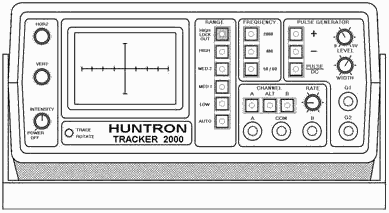
REFERENCES EIMB, Test Methods and Practices, NAVSEA 0967-LP-000-0130, Naval Sea Systems Command, Washington, D.C.,
1980. Fiber Optic Communication Cables and Connectors, (Navy) EE169-CA-GYD-010/E110 TSER E & I, (Published
under the authority of the Secretaries of the Air Force, Army, and Navy), 1983. Fire Control Technician G
3 & 2, NAVEDTRA 10207-B, Naval Education and Training Professional Development and Technology Center,
Pensacola, Fla., 1981. Huntron Tracker 2000 Operation and Maintenance Manual, P/N 21-1052, Huntron
Instruments, Inc., 15720 Mill Creek Blvd., Mill Creek, WA 98012. Introduction to Microelectronics,
NAVEDTRA 172-14-00-84, Naval Education and Training Professional Development and Technology Center, Pensacola,
Fla., 1984.
Logic Clip 548A, NAVAIR 16-45-3102, Naval Air Systems Command, Washington, D.C., 1979. Logic Comparator
10529A, NAVAIR 16-45-3100, Naval Air Systems Command, Washington, D.C., 1979. Logic Probe 545A, NAVAIR
16-45-3105, Naval Air Systems Command, Washington, D.C., 1979. Logic Pulser 546A, NAVAIR 16-45-3104, Naval
Air Systems Command, Washington, D.C., 1979.
2-46
Answers to Questions Q1. Through Q33. A-1. Lack of adequate storage space. A-2. Open filaments. A-3. Testing the
tube in its circuit. A-4. In their circuit. A-5. Restore it to serviceable condition by
operating it temporarily at reduced beam voltage. A-6. Correct gain figure. A-7. Rugged
design. A-8. Sensitive to heat and minor overloads. A-9. Any range setting that produces a
current flow through the transistor that exceeds 1 milliamp (usually R x 1 range).
A-10. 3,500 to 4,000 volts. A-11. 35 volts. A-12. For your own safety. A-13.
Voltages and resistances. A-14. Greater than 10 to 1. A-15. Gate and anode. A-16.
Current is allowed to flow in either direction. A-17. Solder suckers create an electrostatic charge
capable of damaging a MOSFET. A-18. Low power consumption, compact size, and lower cost.
A-19. ICs cannot be repaired. All you need to test is output versus input. A-20. a "1" or "0."
A-21. a "1" state. A-22. a difference in logic states between the reference IC and the IC under
test. A-23. They provide you with a visual indication of the logic state at any point you choose in the
circuit. A-24. 10 feet. A-25. a battery test set will test batteries under load conditions.
A-26. At 1.1 volts.
2-47
A-27. RF substitution method. A-28. Reading their resistances with a standard ohmmeter.
A-29. High attenuation. A-30. It eliminates the need for multiple pieces of test equipment and
it is lightweight and portable. A-31. Testing components by comparison. A-32. Some
defective devices may appear to be good in certain ranges. A-33. a parallel resistor or diode of
similar value.
2-48
| - |
Matter, Energy,
and Direct Current |
| - |
Alternating Current and Transformers |
| - |
Circuit Protection, Control, and Measurement |
| - |
Electrical Conductors, Wiring Techniques,
and Schematic Reading |
| - |
Generators and Motors |
| - |
Electronic Emission, Tubes, and Power Supplies |
| - |
Solid-State Devices and Power Supplies |
| - |
Amplifiers |
| - |
Wave-Generation and Wave-Shaping Circuits |
| - |
Wave Propagation, Transmission Lines, and
Antennas |
| - |
Microwave Principles |
| - |
Modulation Principles |
| - |
Introduction to Number Systems and Logic Circuits |
| - |
- Introduction to Microelectronics |
| - |
Principles of Synchros, Servos, and Gyros |
| - |
Introduction to Test Equipment |
| - |
Radio-Frequency Communications Principles |
| - |
Radar Principles |
| - |
The Technician's Handbook, Master Glossary |
| - |
Test Methods and Practices |
| - |
Introduction to Digital Computers |
| - |
Magnetic Recording |
| - |
Introduction to Fiber Optics |
| Note: Navy Electricity and Electronics Training
Series (NEETS) content is U.S. Navy property in the public domain. |
|


















